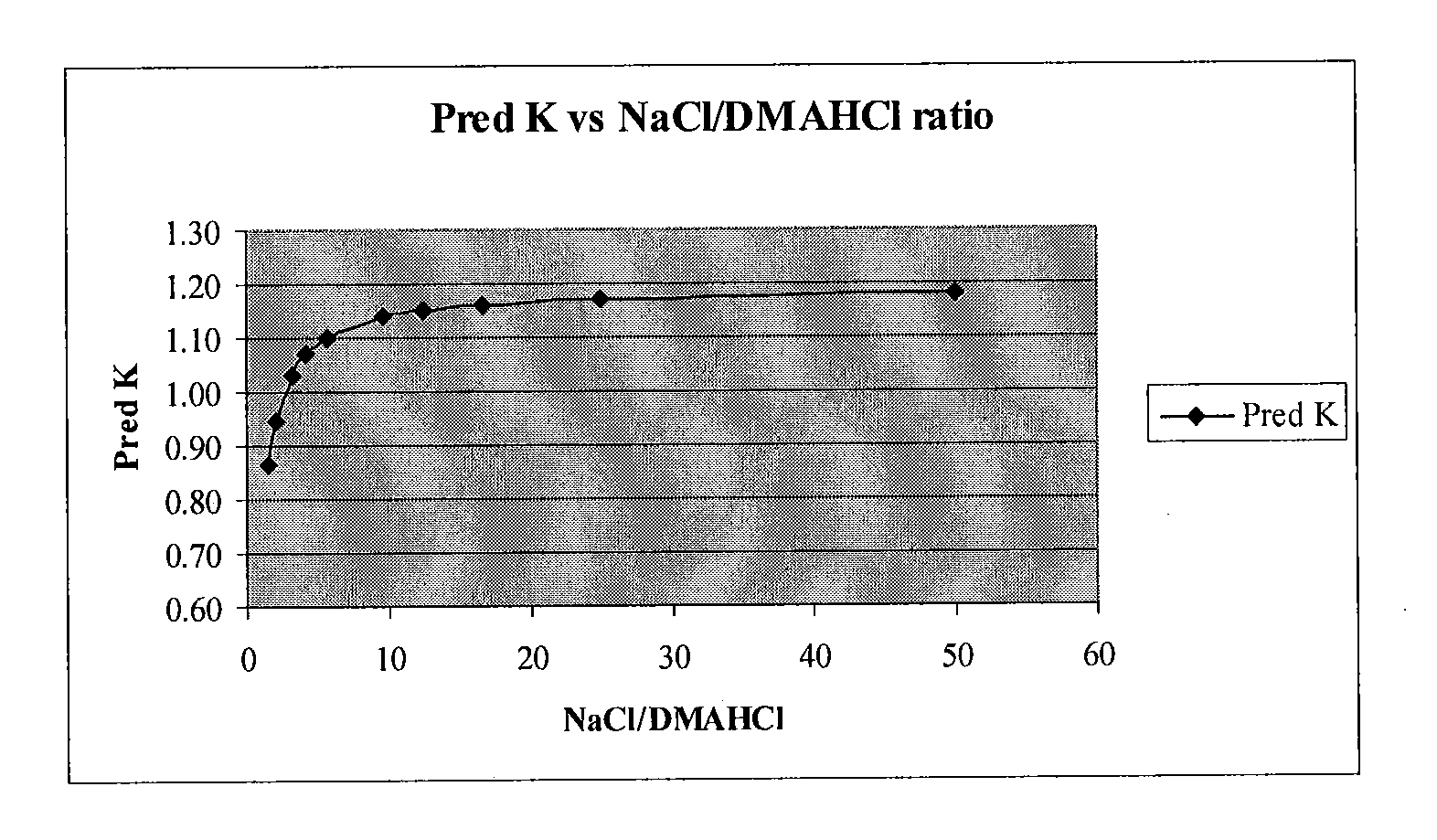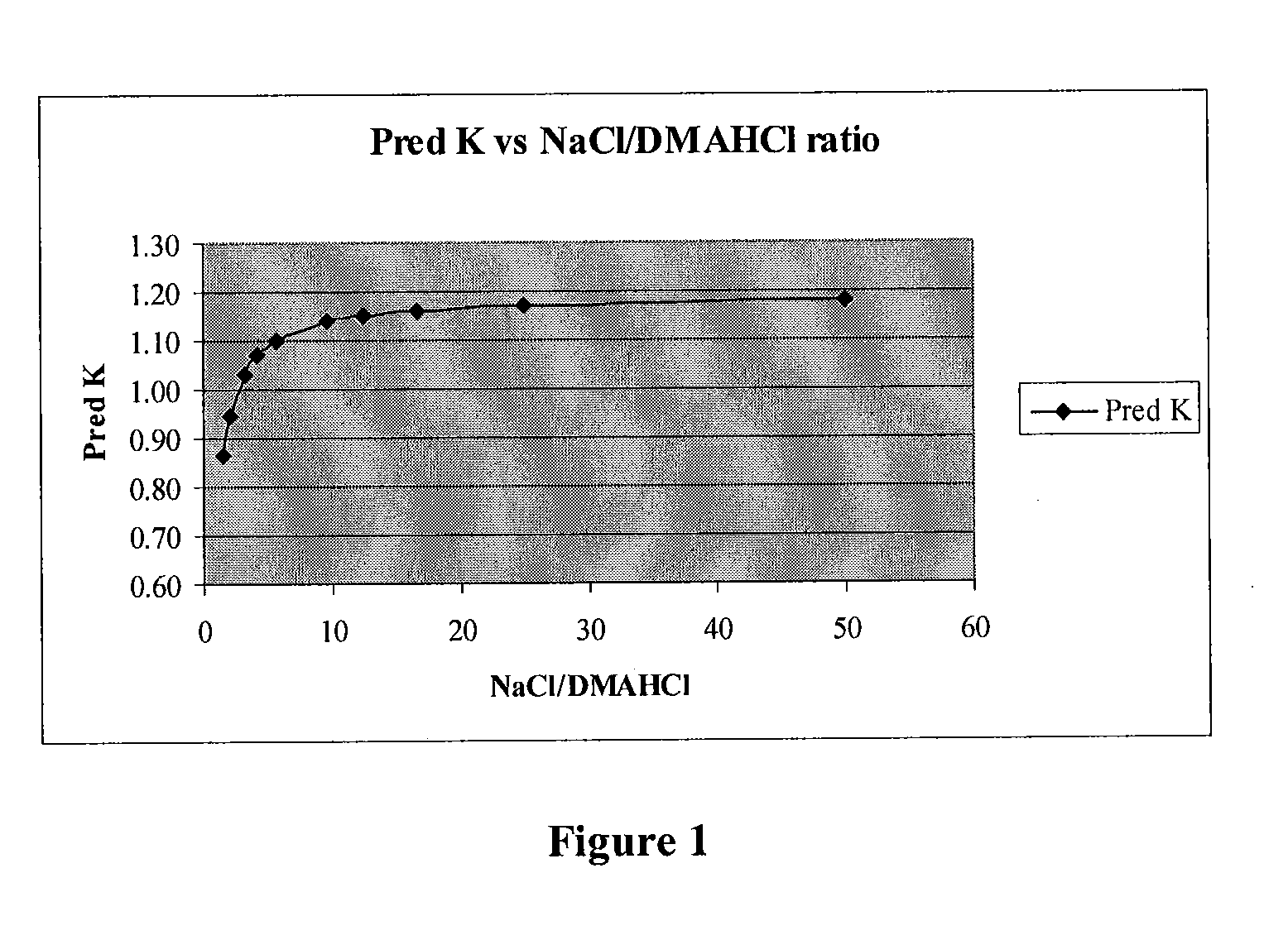Sucralose purification process
a technology of sucralose and purification process, which is applied in the field of sucralose purification process to achieve the effect of increasing the ratio of nacl to dmahcl
- Summary
- Abstract
- Description
- Claims
- Application Information
AI Technical Summary
Benefits of technology
Problems solved by technology
Method used
Image
Examples
example 1
Removal of Dimethylammonium Chloride
[0059]A sucralose solution containing various impurities can be obtained by a number of previously disclosed processes for synthesizing sucralose, as set out above. See, e.g., U.S. Pat. No. 5,498,709. In one embodiment of the present invention, a 6-O-acyl sucralose derivative was deacylated and steam stripped to remove dimethylformamide remaining from the chlorination reaction. This resulted in an aqueous solution with approximately the following composition:
5% total carbohydrate, of which 25% were dichlorosaccharides, 5% were tetrachlorosaccharides, 5% were other trichlorosaccharides, and 65% were sucralose
<1000 ppm DMF
13% NaCl
[0060]2% Organic salts including DMAHCl, and
80% water.
[0061]This solution was concentrated to about 34% carbohydrates via removal of about 70% of weight by evaporation under vacuum. Filtration of the salt produced a resultant stream that was assayed to contain 15% DMA by weight and 2.3% sodium by weight. This was subsequent...
example 2
Experimental Demonstration of the Effect of NaCl and DMAHCL on Partition Coefficient
[0062]A series of aqueous solutions containing DMAHCl, NaCl and sucralose were made up in water as shown in Table 1. The solutions were all clear and colorless at room temperature.
TABLE 1Gms WtExpDMAHCLNaClSucraloseWaterDS / gtotal wt#30.0300.822.3008.343.1511.49#40.0340.182.2578.342.4710.81#50.3900.752.1007.693.2410.93#80.4160.172.2508.332.8411.17#90.2130.431.1678.351.8110.16
[0063]Each sample was shaken with about 37 g of ethyl acetate (EA). The mixture was allowed to settle, resulting in the formation of a heavy phase (aqueous) and a light phase (EA based). The weights of these respective phases were recorded and each phase was analysed for its sucralose content. The dry solids content of each phase was also measured by evaporation to dryness (moisture balance). The results are given below in Table 2.
TABLE 2Mass and analysis of the lower (“heavy”) phaseHeavy phaseTotalDryWt % sucraloseWtWt %Wt / gDSsol...
PUM
| Property | Measurement | Unit |
|---|---|---|
| temperature | aaaaa | aaaaa |
| partition coefficient | aaaaa | aaaaa |
| pH | aaaaa | aaaaa |
Abstract
Description
Claims
Application Information
 Login to view more
Login to view more - R&D Engineer
- R&D Manager
- IP Professional
- Industry Leading Data Capabilities
- Powerful AI technology
- Patent DNA Extraction
Browse by: Latest US Patents, China's latest patents, Technical Efficacy Thesaurus, Application Domain, Technology Topic.
© 2024 PatSnap. All rights reserved.Legal|Privacy policy|Modern Slavery Act Transparency Statement|Sitemap


